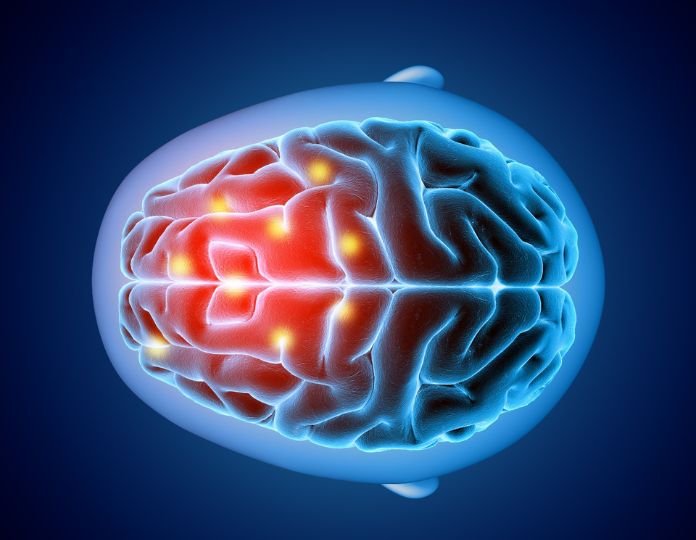When you are heading home tired from work or college, you do not have to actively put effort into finding the right path to home, or you don’t use Google Maps to reach home. Do you know your brain already has a virtual map of the places that you have been before, allowing you to find your way back? This is all because of spatial memory. It describes the ability to remember the places and locations of objects and spaces, helping you navigate through physical environments.
Your spatial memory plays a huge role in everyday activities like remembering where you parked your car or finding ways through a new place. Our spatial memory is actually like a mental map which helps us in remembering where things are located in our surroundings.
Read More: Memory 101: Understanding the Basics of Working Memory
Historical Background
Edward C Tolman (1886-1959) has been known for his contribution on cognitive maps. He proposed that animals, including humans, are all equipped with the ability to create and store mental maps of their surroundings to navigate through and carry out casual day-to-day tasks without any active efforts in recalling the space.
John O’keefe and Lynn Nadel are known for a concept they introduced in the 1970s, in their book “The Hippocampus as a cognitive map”. The concept of cognitive maps in that book highly contributed to the understanding of it at the neural levels.
In fact John O’keefe, May Britt Moser, and Edward I. Moser were some of the personalities whose work on spatial memory and the discovery of cells that constitute a positioning system in the brain, was celebrated and they were awarded the Nobel Prize for this contribution.

Morris’s water maze experiment, given by Richard G. Morris in the 1980’s is known to explore spatial memory in rodents. They checked the animal’s ability to remember the location of a hidden platform in the maze based on spatial cues.
John O’keefe was successful in the discovery of the place cells in the hippocampus. Place cells are actually neurons that activate when the animal or human is in a specific location.
Edward and May Britt Moser later discovered grid cells in the entorhinal cortex which helps animals make a grid-like representation of space. Several researchers tried to conduct virtual reality experiments where they used virtual reality technology to study the spatial memory in humans, by simulation of the surroundings we live in to understand how people navigate and recall information related to location and space.
Read More: Cognition and Aging: How Age Impacts Memory and Mental Abilities?
The Science behind Spatial memory
Spatial memory is not an abstract entity. As we read in the historical background, several researches and experiments discovered the exact brain cells that equips with this ability. Let’s know more on what are those specific brain structure that helps us encode and process spatial information.
- Hippocampus: It is a central structure in the brain in the context of spatial memory. It’s responsible for forming cognitive maps of places we frequently visit, and our surroundings. It plays an important role in spatial navigation and memory consolation.
- Entorhinal cortex: The entorhinal cortex is the one connected with the hippocampus. It consists of grid cells that help us in making a spatial representation of the surroundings. These grid cells are known to provide the metric for spatial navigation.
- Para hippocampus cortex: It is involved in processing information related to location and space and is important for identifying landmarks and spatial relationships between objects in our environment.
- The prefrontal cortex: It engages in higher-order cognitive functions like planning and decision-making, which relate to spatial memory tasks. It also helps in organizing and strategizing the details and information we have about location and space to navigate through.
- Basal ganglia: It is related to motor control and has a role in spatial learning by coordinating our motor abilities and spatial navigation.
Read More: Cerebral Cortex: The most important part of human brain
Types of Spatial Memory
Now spatial memory is further classified into different types that are handling their respective roles in how we remember and navigate our environment.
- Survey memory: contributes to remembering the layout at a higher level like cities or landscapes. It helps us in creating mental maps in order to understand the spatial relationships between different locations.
- Route memory: contributes to our recalling ability so as to retrieve the specific sequence of actions or directions while going from one place to another. It includes remembering the order of landmarks or turns along a path.
- Landmark memory: contributes to our ability to remember different features/objects in the space that serve as reference points to navigate. Landmarks help us remember directions and locations.
- Procedural memory: contributes to our ability to remember how to perform actions or movements within spatial context.
- Object location memory: contributes to our ability to recall the location of specific objects within a space. It also includes the particular relative locations of objects kept in a space.
Read More: 6 Science-Backed Memory, Tips and Techniques
Factors Influencing Spatial Memory and Changes with Age
Several factors can affect/influence it, including our experiences and exposure, attention and focus, emotional significance, stress and anxiety, age and cognitive abilities, navigation strategies, and brain health and neurological conditions.
As we grow older, we tend to lose our efficacy in terms of physical and mental specifics. Changes in it may take place due to various factors related to ageing. Older adults may report a decline in their spatial navigation abilities. Ageing might make it challenging to judge distances or perceive spatial relations accurately older people often forget where they kept objects. The hippocampus region also undergoes changes with age and that may affect the encoding and retrieval of spatial information.
We may conclude that it is our in-built navigation system that is really important in our daily life to effortlessly navigate through places, have a hold on directions, remember where we keep objects and make an estimated guess about new location. Also knowing what affects it might help us maintain and improve our memory skills over time.
References +
- Encyclopædia Britannica, inc. (n.d.). Spatial memory. Encyclopædia Britannica. https://www.britannica.com/science/spatial-memory
- Shrager, Y., Bayley, P. J., Bontempi, B., Hopkins, R. O., & Squire, L. R. (2007, February 20). Spatial memory and the human hippocampus. Proceedings of the National Academy of Sciences of the United States of America. https://www.ncbi.nlm.nih.gov/pmc/articles/PMC1815289/
- Stevens, E. by L. (2020, September 1). Spatial memory. Introduction to Psychology Neuroscience. https://digitaleditions.library.dal.ca/intropsychneuro/chapter/spatial-memory/
- Spatial memory. Spatial Memory – an overview | ScienceDirect Topics. (n.d.). https://www.sciencedirect.com/topics/psychology/spatial-memory













Leave feedback about this